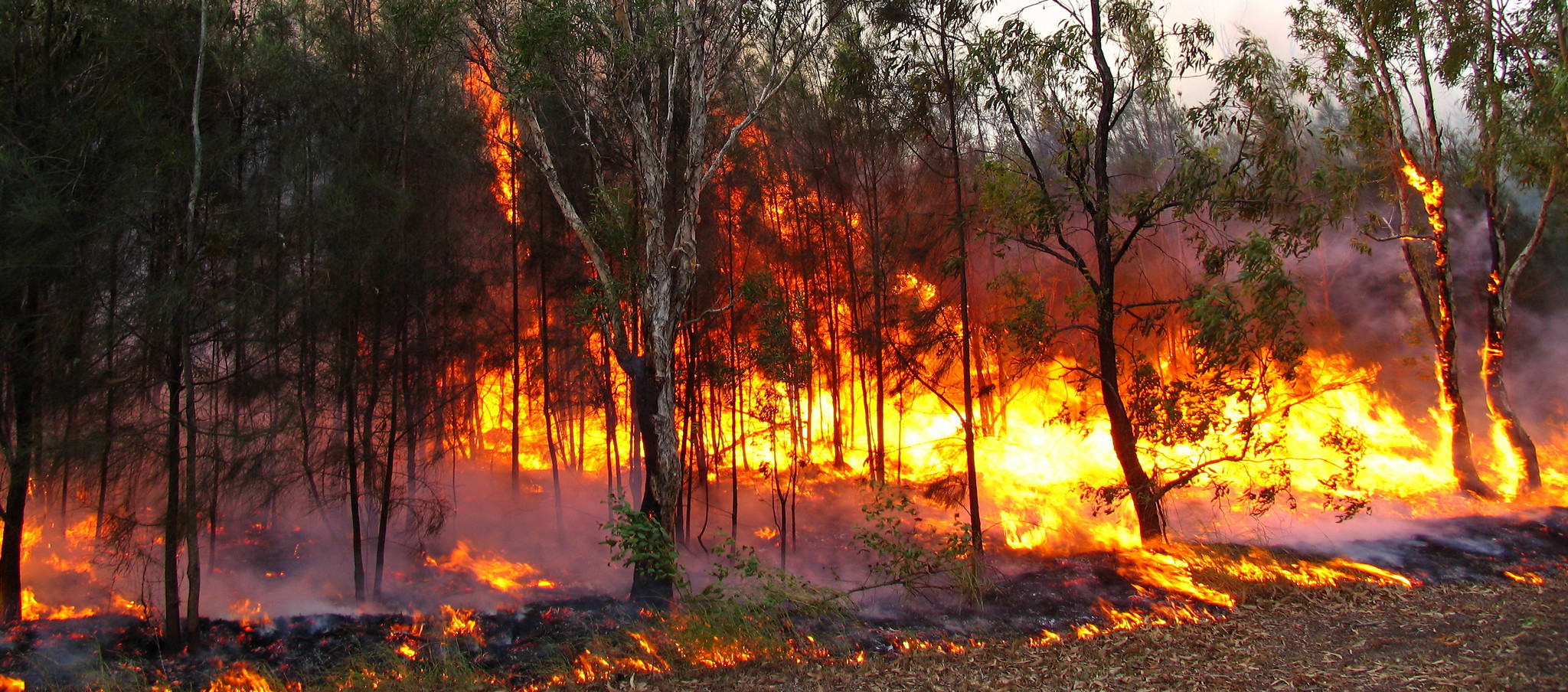
Sci&Tech Editor Ellen Heimpel delves into the causes of this extreme burning and why the Australian Government refuses to acknowledge climate change
Most people are to some extent aware that there have been terrible bushfires raging across Australia. However, this news really hit home to me when my Aunty called to let us know that they had been evacuated from their house in Adelaide, all their animals had temporarily been rehoused and they were preparing for the worst. Bushfires are a regular occurrence in the Australian calendar, however the blazes that currently rage across New South Wales (NSW) and Queensland have never before occurred on such a scale and so early in the season. So why are Australia’s bushfires so catastrophic this early into summer?
Bushfire season In Australia normally peaks in January and February, however fires have already burned through 1.65 million hectares in the state of NSW, more than the states total for the past 3 years combined. This year’s fires in NSW have cost 6 people their lives so far and more than 500 homes have been destroyed. Not only is the tempo and frequency of these fires increasing, but their spatial scale is also spreading. Fires have occurred in tall wet eucalypt fires that rarely burn and even in areas of Tasmania, where fire is only seen normally about once every 1,000 years.
“The spread of the fire has not been helped by powerful winds… currently fanning around 130 fires… across NSW and Queensland
The spread of fire has not been helped by powerful winds, which are currently fanning around 130 fires burning across NSW and Queensland. These strong winds also carry smoke which has blanketed Sydney, increasing air pollution levels to eight times the national benchmark. This can cause many serious health risks, and health officials have advised people who suffer from asthma or other respiratory conditions to stay indoors and avoid physical activity. It is estimated that 1/3 of Australians have been exposed to dangerous smoke levels.
The seriousness of this year’s bushfire season is largely due to a lack of rainfall, which has been completely deficient in many areas over the last 19 months. The east coast especially has seen some of the lowest rainfalls on records. This dryness is exacerbated by the fact that Australia has also been warmer than usual over the last 12 months, with eastern Australia seeing anything between 1.5 and 2.5°C above normal. The Bureau of Meteorology states that a major region for this extended dry and warm period is a climate mechanism in the Indian ocean called the positive Indian Ocean Dipole (IOD). This occurs when the western part of the ocean is significantly warmer than the eastern part, creating a temperature gradient. This generally means that there is less than normal moisture in atmosphere to the northwest of Australia, changing the weather systems coming into Australia from the West and resulting in lower rainfall and water temperatures across winter and spring. Why is the IOD having so much of an effect this year? Experts say that climate patterns could cause the IOD to appear more frequently and intensely as the sea surface temperatures continue to increase.
This brings us to another explanation for why the fires are so extreme this year in Australia: Climate change. Last summer was Australia’s hottest summer on record, averaging 2.14°C above the long-term average. Whilst it is impossible to say that climate change is the only reason that the fires have been so extreme, experts highlight that the average temperature in Australia is now 1 °C above the long-term average and fire seasons are now starting earlier. Any natural variation in bushfire intensity will sit on top of this increased base level. Therefore, whilst climate change does not create bushfires it can and does make them worse.
“fires are also burning politically in Australia, with Government officials refusing to acknowledge the impact, and in some cases the existence of climate change
However, fires are also burning politically in Australia, with Government officials refusing to acknowledge the impact, and in some cases the existence of climate change. Prime Minister Scott claims there is no “credible scientific evidence” that cutting Australia’s emissions could reduce the severity of bushfires. Australia’s target under the Paris Agreement was a 26-28% reduction in emissions by 2030. They are currently not on track to meet this commitment.
Morrison also refused to answer press questions about climate change, instead stating, “My only thoughts today are with those who have lost their lives and their families”. Critics have compared this to US lawmakers that oppose gun reforms responding to mass shootings.
When faced with the same question, NSW premier Gladys Nerejiklian told reporters “Honestly, not today”. These are not the only examples of a refusal to acknowledge the impact of climate change on bushfire risk. Deputy Prime Minister Micheal McCormack dismissed people daring to link the fire extent with climate change as “pure, enlightened and woke capital-city greenies” and “inner-city raving lunatics”, going on to claim “we’ve had fires in Australia since time began”.
Whilst some think this reaction is hardly remotely surprising from Australia, the world’s largest coal exporter, others have taken action to try and get the Government to act on climate change. An alliance has formed between 24 former state fire and emergency chiefs who are working to create awareness surrounding the impacts of climate change and increased bushfire risks. These chiefs claim that the government is ignoring their advice because it does not want to talk about climate change. Friday (Nov 29) saw activists and schoolchildren picketing the headquarters of the ruling party, demanding stronger action on climate change. Protesters brandished signs stating, “Your burning our future” and chants of “we will rise” could be heard.
The current situation is not looking promising, however. Australia is on fire like never before and the fire season is only really beginning.
Comments